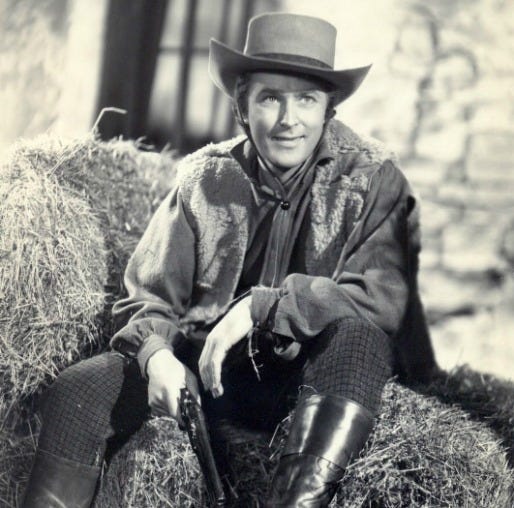Captain Fury (1939)

The story of "the Australian Robin Hood" is one not well known to American audiences, though the 1939 film starring Brian Aherne, "Captain Fury," in many ways follows the mold of the incredibly successful "The Adventures of Robin Hood" from a year earlier.
A merry band of outlaws set about rescuing the lives and livelihood of the working people from the cruel machinations of the local overlord. There's loads of derring-do, bucklers that are copiously swashed, pretty girls in need of kissing and a final showdown in which the villain gets his well-earned comeuppance.
Despite all the action, there's a sense of invulnerability of the characters, though one token supporting player gets to die a heroic death. The outlaws, led by Irish insurgent Captain Michael Fury, repeatedly capture the evil henchmen and then let them go, repeating the cycle over and over again.
Personally, after I'd foiled the same bad guys a few times, I'd be looking for a more permanent solution.
The film was directed by Hollywood legend Hal Roach. whose IMDb profile lists 156 films directed and 1,202 producing credits. He was one of the few directors to establish himself in the silent era and then successfully transition to sound pictures. Grover Jones, Jack Jevne and William C. de Mille (Cecil's older brother) provided the somewhat clunky original script.
It's a generally great-looking film, with lots of loving shots of the Australian countryside ... well, the California countryside standing in for Down Under, anyway. The costumes, weapons and sets all have an authentic feel to them, and the film got an Oscar nomination for Art Direction.
It's such a rousing good time, though, that "Captain Fury" ends up seeming weightless. Because the only good guy who dies is Coughy, a tuberculosis-condemned sidekick played by John Carradine whose first spoken lines are that he only has a few months to live, it feels as if the story takes place in a consequence-free zone.
It is notable that Coughy — who, I should point out, never actually coughs — is the one who ends up killing corrupt landlord Arnold Trist, malevolently played by George Zucco. In 1800s Australia, when it was still just a lawless British colony, Trist wants to keep all the land for himself and push out the peaceful settlers who have taken up in the valley.
With only an ineffectual governor to rule the entire land, it's up to Fury and other convicted criminals to rally the cause. Fury was a famous rebel sent to Australia to serve out his time in indentured servitude, a fate he seems perfectly willing to accept until Trist wants to whip him for insubordination.
He escapes, meets up with the leader of the settlers, François Dupré (Paul Lukas), a stern Mennonite with a a lovely, spirited daughter named Jeanette (June Lang). The handsome Fury and the winsome Jeanette are soon an item, much to the consternation of papa, who later even goes so far as to betray Fury to Trist.
The meatiest part by far goes to Victor McLaglen as Blackie. As head man among the convicts, the gregarious strongman tussles with Fury and gives him a thrashing. But it's enough to endear one red-blooded Irishman to another, and after Fury breaks him out Blackie agrees to become his right-hand man.
A running joke is that Blackie is a born thief who thinks they should be keeping all the loot they liberate from Trist's men for themselves, while Fury insists they return it to the settlers. McLaglen is a fun presence, part taskmaster and part comic relief, and he provides "Captain Fury" with its juiciest scenes.
I'm glad I saw "Captain Fury," though I can't say as I thought that much of it. It's not a seminal film, but rather a fairly obvious knockoff of another successful picture — something Hollywood was quite adept at during the Golden era.
3.5 Yaps



